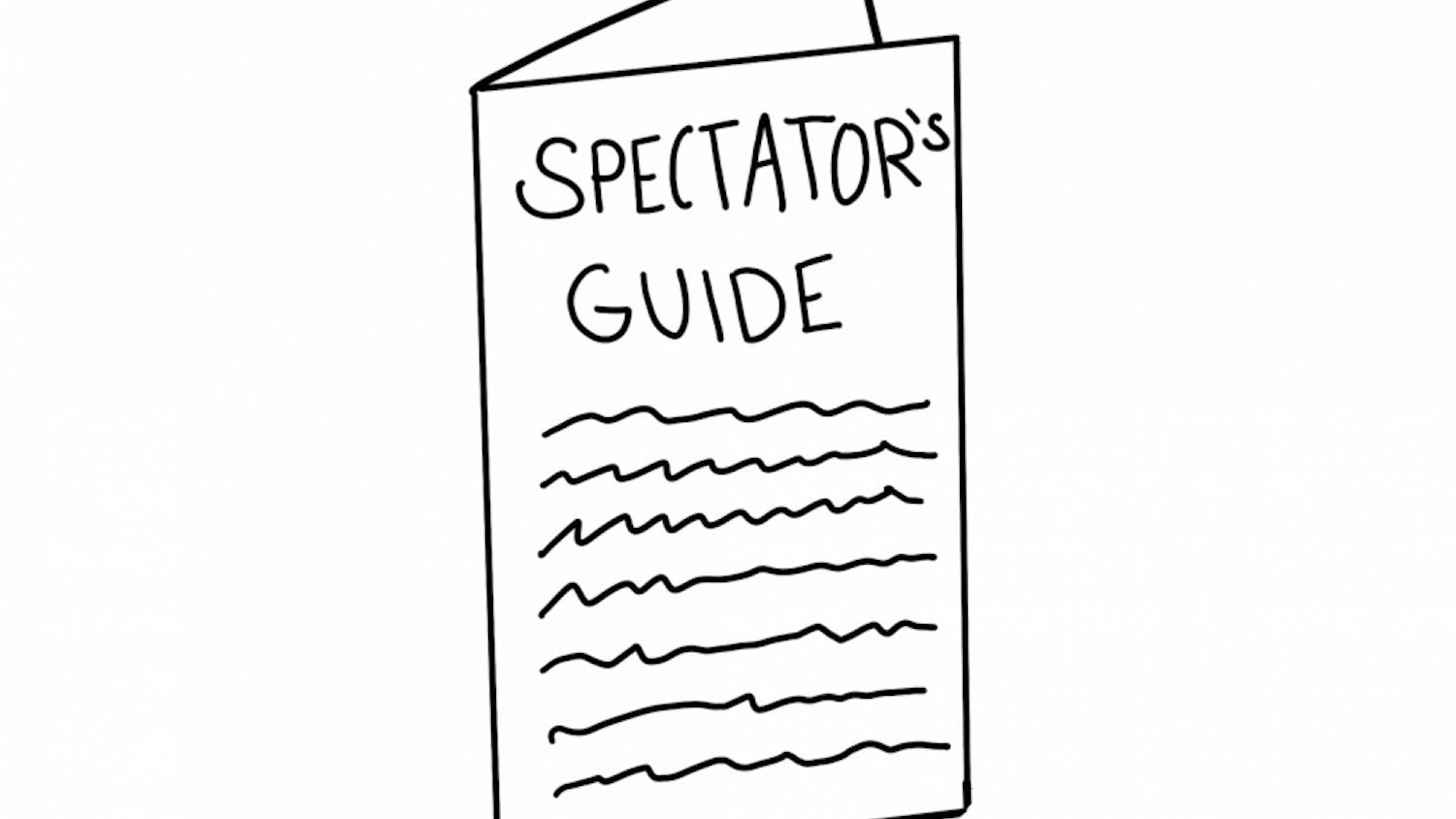The Fostering and Restoring Community section involves strategies that are concerned with creating restorative mechanisms to address harm, facilitating spaces for critical conversations and workshops, creating avenues for dialogue between different stakeholders and providing opportunities to report incidents of bias and discrimination. These strategies are wide in scope, addressing students, faculty, staff, administration and community members.
Director of Equity and Inclusion Renee Wells said that being in a community means that people will both experience and cause harm that is often unintentional.
“Harm is happening all over the campus all the time,” Wells said. “I think that cultural change requires that we acknowledge where systemic, institutional, interpersonal barriers and harms exist and the ways in which we are either unintentionally complicit in or sometimes benefit from that.”
“Due to differences in lived experience, every individual has a different comfort level navigating and talking about harm, and it is important to meet students where they are at in their journey,” Wells said. Though some people may feel discomfort during conversations about diversity, equity and inclusion, ultimately, they are feeling discomfort with a threat to the status quo, Wells explained.
“But what we have to acknowledge is that this status quo is a whole bunch of interconnected systems of oppression that perpetuate inequity and harm,” she said. “So we have to get comfortable with the fact that people are going to be uncomfortable with that.”
Of the 14 strategies detailed in the Fostering and Restoring Community Section of the Action Plan, 10 were scheduled for completion this year. Twelve of the fourteen have either been accomplished or commenced at the time of publication, and eight strategies are ongoing.
Responding to incidents of harm
Strategy #1 is about developing a system for using restorative practices, which is a framework used to proactively build community in response to incidents that cause harm on campus. There is a current framework in place, but the Restorative Practices Steering Committee — which includes several staff and administrators — is constantly tweaking the framework and is still integrating it into bodies around campus.
Associate Dean of Community Standards Brian Lind said that restorative practices, which have been employed by the college for several years in place of traditional disciplinary avenues, consist of three pillars: community building, responding to harm, and leadership. Residential Life and staff members have been trained in facilitating community building circles and restorative frameworks to address breakdowns in community, such as when communities cause harm to each other.
The restorative practices framework can be used in a variety of contexts, but often involves bringing parties who have experienced and caused harm together to discuss the impact of a behavior or breakdown in community.
“Restorative practices give us a meaningful framework to develop relationships so that we have stronger bonds when we cause or experience harm,” Lind said. “And we have a shared practice of how to respond to [harm] appropriately.”
Strategy #12 establishes alternative options for responding to incidents of relationship misconduct outside of the traditional adjudication process. Before this alternative pathway was available, students who wished to report misconduct filed a complaint with the Title IX office and underwent a formal investigation, according to Lind. This strategy creates another option.
“The [adaptable process] gives us a way, I think, to address it in a form that isn't punitive, that will hopefully help repair the harm that's been caused, and help everybody involved kind of process and work through writing the situation.
Establishing opportunities for critical conversations
Strategy #2 is about engaging students in critical conversations around healthy relationships including sexual encounters and consent, and strategy #4 is about critical conversations about consent, sexual violence, and misconduct. These initiatives have commenced and are ongoing.
According to Emily Wagner, assistant director of health and wellness education, their office has already had successful engagement with a variety of programs, including ProjectConnect, a six-week group series where students learn about developing authentic relationships, and Finding Your People, a panel for students to share ideas about expanding your friendship circle and creating community at Middlebury.
Green Dot, a pre-existing program that aims to prevent sexual violence and promote healthy relationships through bystander intervention and conversation, will begin providing training at each of the Middlebury schools abroad. The training will be tailored to the cultural and linguistic differences of that country beginning in the fall of 2021, Wagner said in an email to the Campus.
Sex Positive Education for College Students (SPECS) and confidential advocacy services such as MiddSafe have also sought to create a safer space on campus regarding relationships and consent.
For the past three semesters, the Title IX office has also incorporated Speak About It — a program about consent and communication — into first-year student student orientation. The Title IX office also hosted a book club for students for the book Sexual Citizens, which discusses sexual assault on college campuses, according to Wagner and Civil Rights and Title IX Coordinator Marti McCaleb.
“As we move into the 2021-2022 school year, we are working closely with Residential Life and other campus partners around strategic ways to reach more students in person,” Wagner said in an email.
Avenues for dialogue and feedback
Several strategies in this section are concerned with establishing channels of communication between students and staff, faculty, and administration.
Wells hosts weekly office hours on Fridays from 12 to two and by appointment where students, faculty and staff can share concerns, seek support, and explore strategies to address concerns, an initiative introduced in strategy #6 of the Plan.
Per strategy #7, the Senior Leadership Group (SLG) — a collection of senior-level administrators — has been meeting monthly with a group of BIPOC students who “represent key stakeholders and leadership of different cultural organizations to have collaborative discussions that aim for the implementation of institutional change,” according to a school-wide email from Dec. 15.
Strategy #8 calls for the creation of a Student Advisory Council for the Office of Institutional Diversity, Equity and Inclusion to provide feedback and recommendations related to campus concerns, barriers to marginalized students on campus and forms of oppression. According to Chief Diversity Officer Miguel Fernández, this strategy has not yet been implemented.
Strategy #9 tasks Faculty Council and the Educational Affairs Committee with “explor[ing] the possibility of including a question about accessibility, equity, and classroom climate on Course Response Forms.” This strategy is slated for 2021–2022, and work has not yet begun on this initiative, according to Faculty Council member Natalie Eppelsheimer.
Strategy #13 tasks Community Council (CC) with exploring the role of Public Safety and collaboration with police and security. CC will then present a proposal to SLG outlining their findings. According to Co-Chair of Community Council Christian Kummer, CC has been in conversation with administration to create a formal recommendation on this topic, which will likely be completed next fall.
Workshops
Strategy #5 calls for regular workshops for faculty and staff to better understand the reporting requirements and investigation process for discrimination, harassmaent and sexual violence, and appropriate resources for members of the campus community. OIDEI provides the workshops and has presented them to various offices and groups, including Directors of the Language Schools, faculty and staff at the Center for Nonproliferation Studies, staff of the Schools Abroad and incoming new faculty at Middlebury, according to McCaleb.
“Every Middlebury employee has the responsibility to participate in and promote a respectful environment at Middlebury,” said McCaleb in an email. “Our conversations in this area are geared towards individuals understanding their personal impact and obligations within our community.”
Strategy #14 calls for “regular education opportunities related to diversity, equity and inclusion in the local community.”
Wells has spearheaded these efforts, and has facilitated various workshops in the past year about anti-racism, microaggressions and stereotyping for local non-profits, the Rutland NAACP, campus and community members, Middlebury Co-op managers and the Ilsley Public Library.
Communication and Reporting
Strategy #3 is concerned with clear communication about behaviors prohibited under the Non-Discrimination Policy and how to report breaches of this policy. This strategy has already been implemented.
Strategy #10 advises the creation of an online form that can be used to report incidents of discrimincation, harassment and violence. This form has been in use since at least last fall, and can be found at go/bias. As of January of this year, the form had received 28 incident reports representing 16 incidents, according to Fernández.
Strategy #11 recommends that an online form be used to report incidents of discrimination, harassment and violence. This form can be found at go/report and has been promoted through various social media channels and partners, though it is not yet widely utilized, according to McCaleb.
Part 3: Fostering & Restoring Community
Comments



